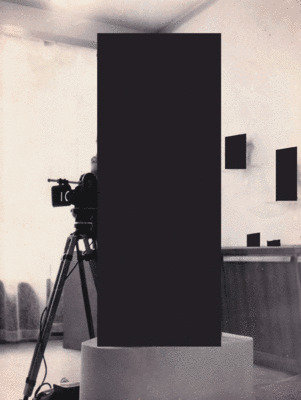Dominik Lang
dal 7/11/2012 al 19/1/2013
Segnalato da
7/11/2012
Dominik Lang
Kunsthaus Dresden Municipal Gallery of Contemporary Art, Dresden
Humble Objects. In this exhibition Lang asks what art was, what it is, and what it can be. He employs the body of work of his late father, Jiri Lang, as a starting point of his investigation.

curated by Petra Reichensperger
In "Humble Objects", Dominik Lang asks what art was, what it is, and what it can be. He employs the body of work of his late father, Jiří Lang, as a starting point of his investigation. Jiří Lang was a Czech sculptor, who died when his son was still a teenager. He left behind an artist’s studio of finished and unfinished sculptures, which have never been shown in public. Dominik describes his father’s collection as "a life’s work, concealing considerable effort, time, and pleasure shrunk to a forgotten archive; a dusty depository." His father’s studio became a place of memory, of transformation, and of creation: a meeting-place of past, present and future.
In Dominik Lang’s exhibition, curated by Petra Reichensperger, the artist also focuses on the performative act of making artworks visible in the exhibition space. Whilst he often referred to his father’s oeuvre in former works, he now works off pieces by different Czechoslovakian artists, which are all from his father’s generation.
The elements Dominik Lang built refer to works from artists like Maria Bartuszová, Hugo Demartini, Milan Grygar, Eva Kmentová, Bĕla Kolářová, Stanislav Kolíbal, Karel Malich und Jiří Novák. All of them were active from the 1950ies to now. In opposition to the officially accepted and state supported art, they produced avantgardistic and abstract works. At the time they were if at all exhibited in niche-spaces. Only today they are slowly finding their way into museum exhibitions and collections. They do not only play a fundamental role in the exhibition concept, "Humble Objects" is also the first time their work is brought together in this constellation.
Dominik Lang built plinths, walls and fixtures for them, thus unpretentiously making things, which are often perceived as self-evident, the centre of attention. Doing so the artist raises questions on the status of these often subordinate objects: Do they have their own identity or are they dependent on superior objects? Do they become art objects, when they are exhibited in the gallery space?
Through newly produced works, conceived specifically for Kunsthaus Dresden, the artist puts spatial as well as temporal perceptions of art to the test. Lang’s treatment of the present invokes Henri Bergson’s description of the present in "Matière et Mémoire" (1896) as both "a perception of the immediate past and a determination of the immediate future." The moment of production and the moment of presentation are both fundamental to "Humble Objects".
In the context of her research project "Curating Architecture" (2006 - 2008), Andrea Phillips points out how exhibitions also follow a contextualized, process-based presentation of art and artefacts, and are subject to the social, economic, and juridical conditions of the exhibiting space. To expand the social relevance of contemporary art thus requires a critical investigation of the built environment. In "Humble Objects", Dominik Lang presents and challenges us with such an investigation.
Dominik Lang, *1980 in Prague, took part in the third Prague Biennial 2009. 2011 he exhibited his piece "The Sleeping City" in the Czech and Slovakian Pavilion during the 54th Biennale di Venezia. 2012 he took part in "La Triennale, Intense Proximité" in Palais de Tokyo in Paris. From 30 October 2011 to 5 February 2012, his piece "Non-Site", 2011 was exhibited in the group exhibition "Auxiliary Constructions – Behelfskonstruktionen" at Kunsthaus Dresden.
Contact
Karin Ziegler: kziegler@dresden.de
Opening: 08.11.2012, 7pm
8.30pm performance by artist collective Rafani from Prague
Kunsthaus Dresden – Municipal Gallery for Contemporary Art
Rähnitzgasse 8 Dresden
Opening hours:
Tuesday-Thursday 2–7pm
Friday-Sunday and holidays 11–7pm
Friday admission free, 4.30pm tours through the current exhibition



